Saturday, February 1, 2014 – 00:00
Cascadia Research will be undertaking a 10-day field project off the island of Kaua‘i starting February 1st, 2014, working in conjunction with researchers from HDR Inc., and the Naval Facilities Engineering Command Pacific as part of the Navy’s monitoring program. This will be our 10th field project (and 7th year) working off Kaua‘i and Ni‘ihau. The primary purpose of the project is to obtain information on movements and habitat use of a number of species of toothed whales through the deployment of satellite tags. We are also hoping to examine movements of animals before, during, and after a Submarine Commanders Course being undertaken by the U.S. Navy later in February.
As we do during all of our field projects, we will also be obtaining photos from most species of odontocetes we encounter, to contribute to ongoing studies of residency patterns and social organization and to estimate population sizes, and collecting biopsy samples for toxicology and genetic studies. Last year we had two similar field projects, one in February and one in July and August, and like those projects we expect to have higher encounter rates than normal since we’ll be working in collaboration with the Marine Mammal Monitoring on Navy Ranges (M3R) program, using the Navy’s hydrophone range off Kaua‘i (see map below) to localize animals. When on the water we will be in constant contact with Navy researchers from the M3R program to help direct us to groups that they are detecting acoustically. This will allow us to confirm the species (to aid in using the acoustic range for research purposes on different species), and should make it much easier for us to find groups of whales and dolphins for tagging, photo-ID and biopsy sampling.
Species that we are hoping to satellite tag include rough-toothed dolphins, bottlenose dolphins, false killer whales, short-finned pilot whales, melon-headed whales, pygmy killer whales, sperm whales, Cuvier’s beaked whales, and Blainville’s beaked whales.
The research team included Daniel Webster, Brenda Rone, Amelia Brower, Elisa Weiss, and Robin Baird. This work is being funded by Commander, Pacific Fleet.
End up project update
Over the last 10 days we covered almost 1,300 kilometers off Kauai, and had 26 sightings of five species of odontocetes. We deployed satellite tags on four species, and are obtaining data from 10 different groups: three groups of pilot whales, two groups of bottlenose dolphins, two groups of rough-toothed dolphins, and one group of Blainville’s beaked whales. Four of the tags are depth-transmitting satellite tags, so we are also obtaining dive data from those tags.

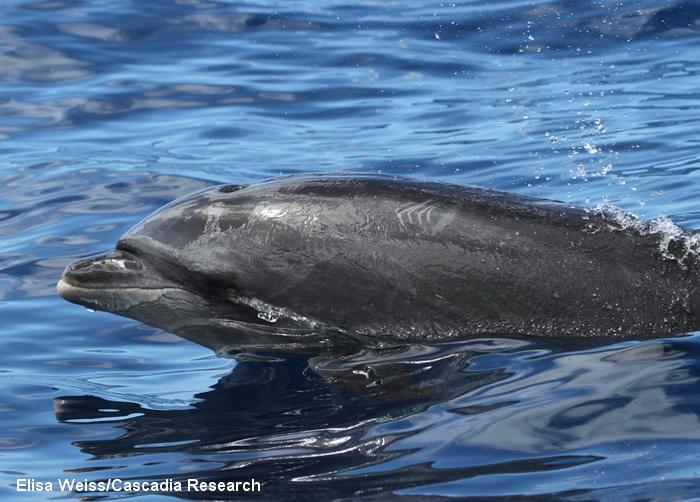
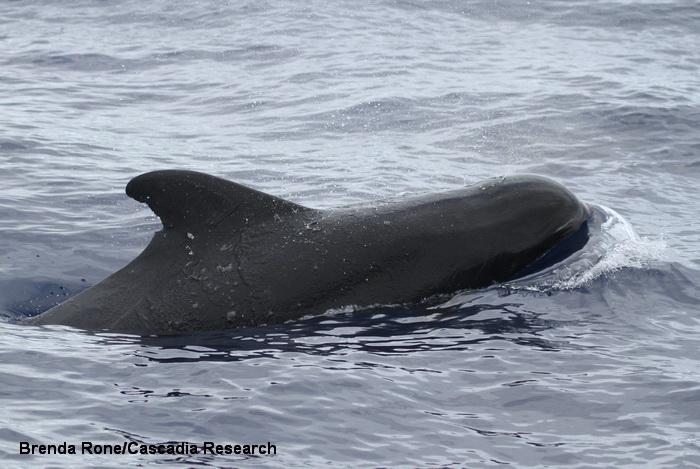
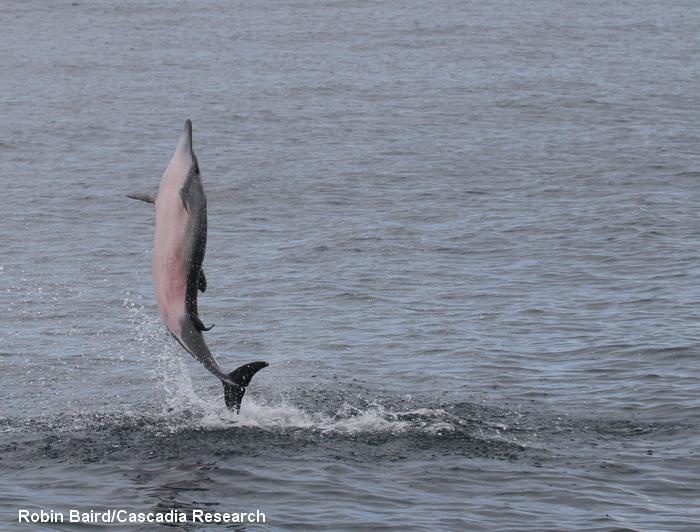
February 6, 2014 update
Today we covered 200 kilometers of trackline off the south and southwest shores of the island, some of it in heavy rain conditions. While there were lots of humpback whales in the area, we had only two odontocete sightings, a pair of probable dwarf sperm whales, and a small group of bottlenose dolphins.
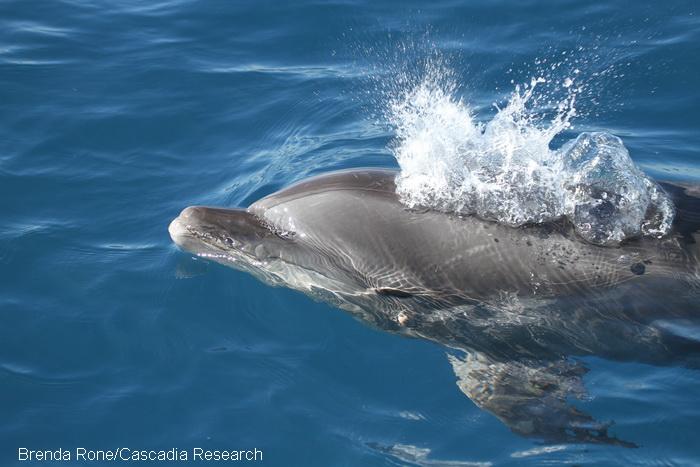
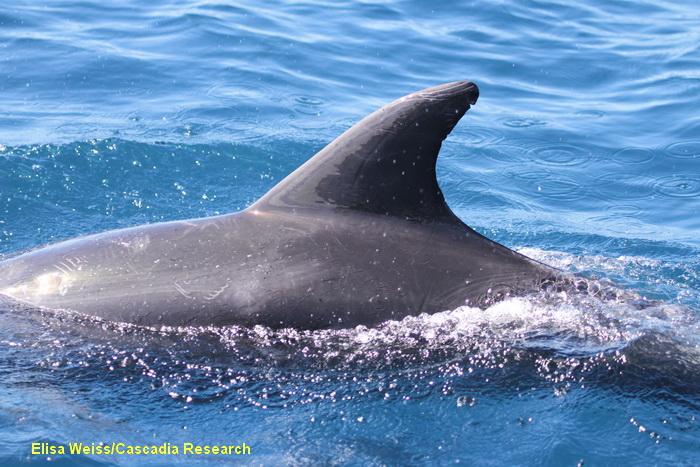
On February 5th we ventured out on the water but had to quickly turn around as a continuous series of storm cells swept over the island.
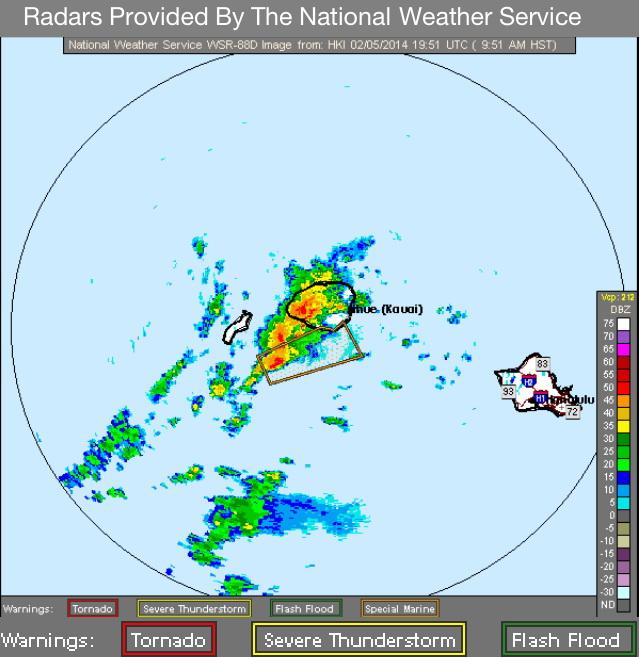
February 4, 2014 update
In our first three days on the water we had four sightings of pilot whales and one unidentified whale, probably a beaked whale. Today we added four new species to the trip list, with encounters with rough-toothed dolphins, bottlenose dolphins, spinner dolphins, and one of our highest priority species, Blainville’s beaked whales.
We encountered a group of five Blainville’s, including an adult male, a large subadult male, one adult female and two subadults/juveniles. This was by far the most productive encounter we’ve had with beaked whales off Kaua‘i and Ni‘ihau – we were able to photo-identify all five individuals, deployed two satellite tags (one location-only and one location-dive tag, and collected one biopsy sample for genetics.
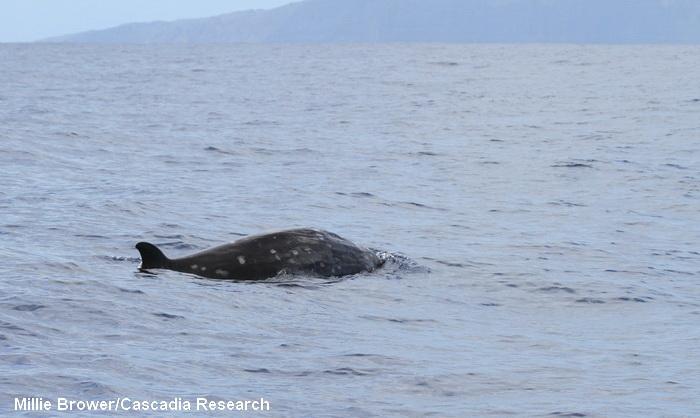
Photo by Millie Brower.
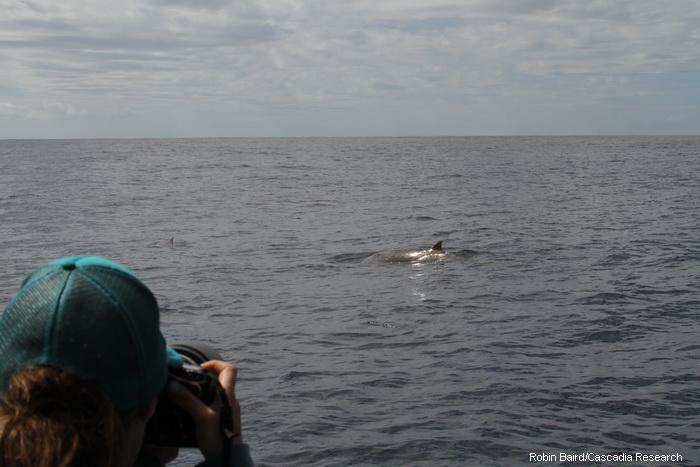
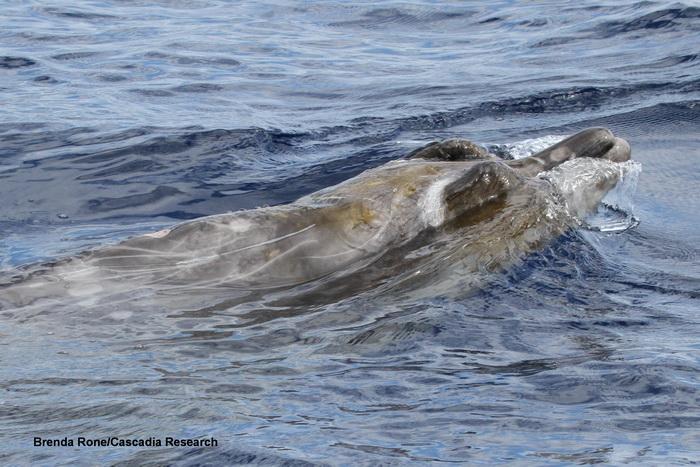
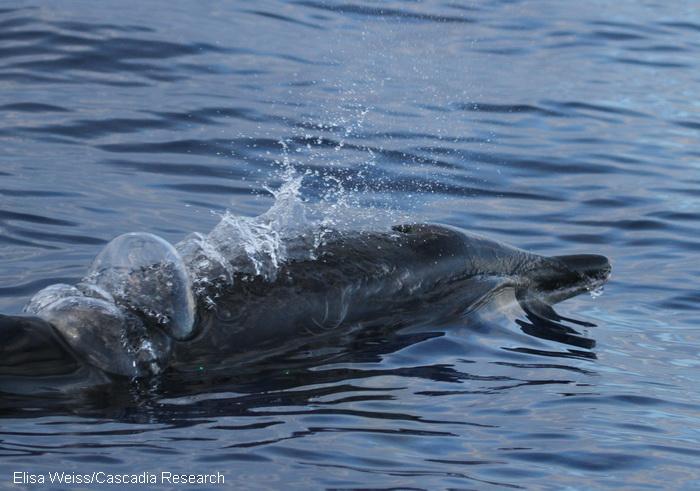
We encountered two different groups of rough-toothed dolphins, and were able to deploy satellite tags on one individual in each group.
We encountered several groups of bottlenose dolphins and deployed a satellite tag on one individual
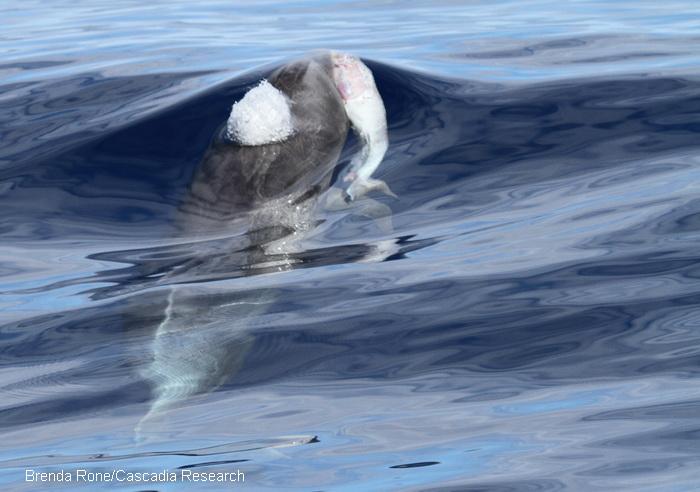
February 3, 2014 update
The last two days have been quite productive, with encounters with two new groups of short-finned pilot whales. We were able to obtain identification photos of most of the individuals present, and deployed satellite tags on individuals in both groups, so that we are now obtaining movement data on three different groups of pilot whales around the island.